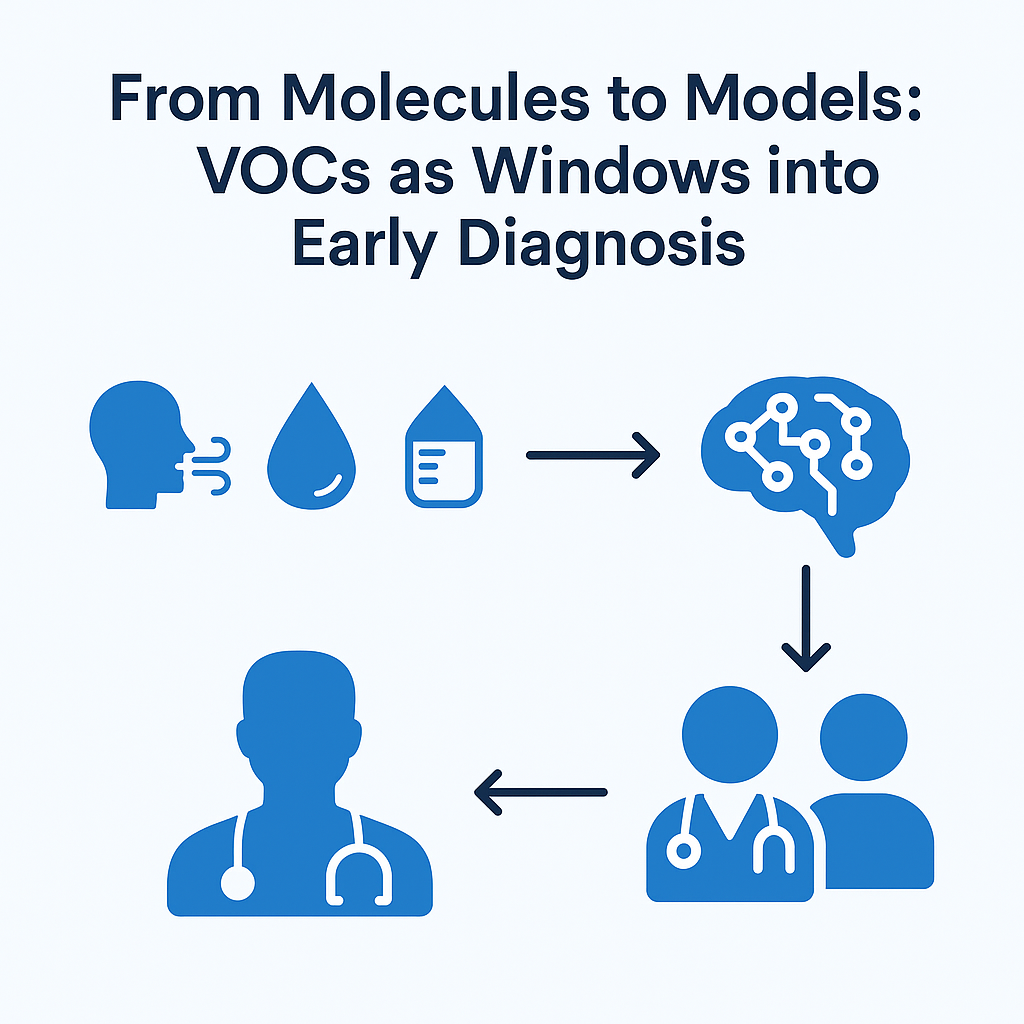By Baruh Polis, MD, PhD, TECH (Technion – Israel Institute of Technology)
Medicine often begins with deceptively simple questions: What is wrong? Can we tell early? How can we help? Behind these lie centuries of struggle, both scientific and human. The VOLABIOS project carries this tradition into a new frontier: using Volatile Organic Compounds (VOCs) — from breath, sweat, blood, and urine — to aid in the early detection and management of schizophrenia.
For VOLABIOS, a clinical decision support system (CDSS) is central. But a CDSS cannot be built from intuition alone. It requires a translation: turning clinical questions into tasks that machine learning can handle.
From Clinical Question to Machine Learning Task
Clinicians posed three pressing questions:
- Can we identify those at high risk before full illness onset?
- Can we distinguish schizophrenia from major depressive disorder or bipolar disorder?
- Can we anticipate relapses and monitor the illness course?
For AI, these become technical problems. Early diagnosis is a binary classification: “likely schizophrenia” vs. “not schizophrenia.” Differentiation of affective and non-affective psychoses becomes a multi-class classification. Relapse prediction becomes a time-to-event model, where a patient’s history unfolds as temporal data.
Translation here is not simply linguistic. It reshapes psychiatry’s questions into measurable, testable forms that algorithms can process.
How the Data Look
In the clinic, a psychiatrist sees a person; in the CDSS, that person appears as data:
- Structured assessments via psychiatric rating scales (PANSS, BPRS, MADRS).
- Omics data from blood, urine, and transcriptomics.
- VOC profiles from multiple body fluids.
- Lifestyle, demographics, and environmental exposures.
Each is a feature in a dataset. But numbers are not reality itself — they are representations, much like words in speech. Behind each lies a choice: what to measure, how to encode it, how to protect privacy. Some indicators serve as proxies: a medication change may hint at symptom worsening, a hospital readmission at relapse.
The CDSS must therefore be cautious, ensuring proxies do not replace judgment.
How Models Work
Once the data are prepared, models take shape:
- Logistic regression for interpretable classifications.
- Random forests or gradient boosting when interactions multiply.
- Neural networks for subtle omics patterns.
- Time-series models for relapse forecasts.
The choice reflects trade-offs: transparency vs. accuracy, interpretability vs. complexity. Clinicians must trust the outputs. That means results cannot remain “black boxes.” They need risk scores, confidence intervals, and explanations alongside predictions.
This is not just mathematics. Like a junior colleague, the CDSS must offer reasons as well as results, grounding its suggestions in evidence that clinicians can evaluate.
In Practice
Picture a psychiatrist in Aachen or Haifa with a young patient in a first psychotic episode. The patient exhales into a VOC device. Within minutes, the CDSS dashboard shows:
- Risk score: 0.72 probability of schizophrenia.
- Key factors: elevated pentane and trimethylamine; family history.
- Uncertainty: ±0.08 confidence.
This does not replace the clinician’s expertise. It sharpens it — giving structure to uncertainty, highlighting hidden signals, and prompting discussion of differential diagnoses. The translation is circular: clinical questions shaped the algorithm, and now the algorithm reshapes the clinical encounter.
Challenges Ahead
Several issues require care:
- Data heterogeneity. VOC results vary across devices and sites. Standardization is essential.
- Bias. If training sets draw mainly from one population, predictions may falter elsewhere.
- Ethics. Informed consent must extend to algorithmic use of personal data.
- Regulation. Under EU MDR/IVDR, robust clinical evidence is needed before deployment.
A New Diagnostic Imagination
Recasting psychiatric questions as machine learning tasks changes the field’s self-understanding. Once we ask if a relapse can be predicted with a survival model, or if patient subtypes can be separated with a classifier, we are reframing what it means to know in psychiatry.
VOLABIOS does not claim that VOCs or algorithms will solve schizophrenia. But they can augment psychiatry’s diagnostic imagination.
AI becomes not a replacement for judgment but an additional perspective — one that can reveal hidden regularities and help clinicians act sooner. In bridging psychiatry and computation, VOLABIOS is creating not just a tool but a new form of collaboration between human insight and machine learning.

